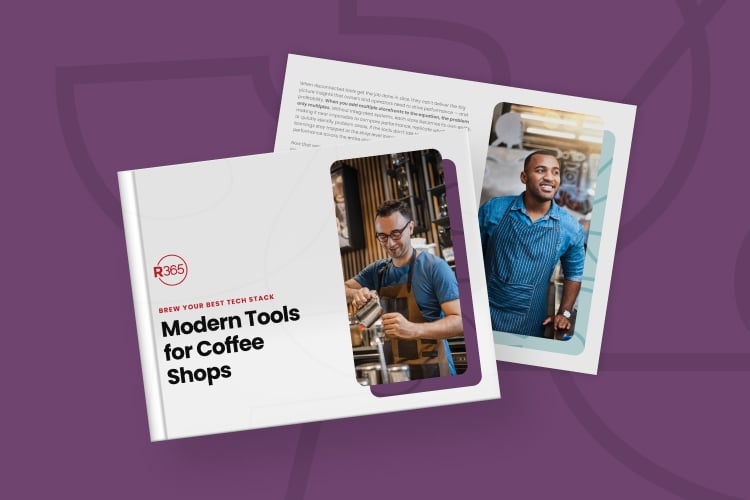Starting a new job can be stressful for new hires and managers alike, particularly in the fast-paced restaurant industry. New employees are anxious about making a good impression and learning new skills in an unfamiliar environment. Managers are eager to get new employees up to speed and hope they’ll be able to cut it. Having a robust onboarding process is the single best way to calm the nerves a bit, and seamlessly integrating new employees into your restaurant.
That said, many restaurants don’t put a great deal of focus on their onboarding. Paperwork mistakes, outdated policies, payroll delays, and poor scheduling are just some of the frustrations new hires experience when joining a restaurant. Some restaurants also resist the move to a digital onboarding solution, which makes the already-grueling process longer. More importantly, it means spending more time and resources of you and your employees that are better spent running the show.
Luckily, there are a few things you can do as a restaurant operator to revamp your onboarding. Many of them are easier than you might think. Let’s look at some of these tips on improving your restaurant onboarding for a better employee experience.
#1 Onboarding Is Your First Impression, So Make It Count
Before we move on to our tips, though, let’s acknowledge why onboarding is so important in the first place. While its primary function is to fill out paperwork, sign documents, and get training, it is also your new hires’ first real experience as an employee of your restaurant.
No one is going to walk out of onboarding training like they just had a life-altering experience, but they will notice the ease or frustration of the process. This first experience sets the tone for their satisfaction with the position and your operation. It is their first insight into how you run your business. An organized, well-planned onboarding indicates an organized, well-planned restaurant.
#2 Make Onboarding A Finite, Discrete Process
Anyone who has gone through the endless forms, signatures, and videos of new job training knows what a slog the process, albeit necessary, can be. But what can be more frustrating is never feeling like it’s complete. Waiting to have a form become available, or not being able to get your payroll set up weeks into the job can leave a bad taste in your new employee’s mouth. And while it’s not always management’s fault – employees have their fair share of feet dragging – its management’s responsibility to make onboarding a discrete process with an end date.
At that point, your new team member should have everything they need to start their position. From payroll, to scheduling, to kitchen or inventory training – even smaller things like their uniform – everything should be completed on the final day of onboarding. This again, can make a big impact on employee satisfaction and their impression of how things run. It reinforces your team culture by saying “we get things done when they’re due, and you should to.”
#3 Give New Hires One Meaningful Task On The First Day
As we’ve covered a few times, there’s only so many forms we can fill out before we go dead-eyed or get carpal tunnel. One way to break up the slog is to give each new hire one meaningful task on their first day. This can be quick and easy, creating one task for each position that can be reused in each onboarding. Servers can spend 15 minutes looking at your menus. Back of house can tour the kitchen and walk-in to get familiarized. Bartenders can familiarize themselves with a few house specials. This might seem small, but it’s a nice way to slowly introduce your new employees into their jobs, even for just a few minutes, and break up the monotony.
#4 Adopt A Digital Onboarding Solution And Cut Onboarding Time In Half
Gen Z now makes up 49% percent of food service workers, and, increasingly like the rest of us, rely on their phones more than anything else they own. They apply to jobs online, take interviews over Zoom, and on some days, probably text with their employers more than they speak to them.
Onboarding should be no different. While restaurants increasingly switch to digital onboarding, along with other restaurant management software, some still rely on scanning paper forms only to need to rescan them again any time changes are made. This system may work, but digital onboarding provides a better experience not just to your employees, but to you as a manager.
These tools allow you to track progress of all employees on a single screen, assign them tasks and checklists to keep organized and on track. Form changes to company policies, manager names, or any number of updates can be made instantly with a few clicks. Even small conveniences, like removing the need to try to understand chicken scratch handwriting, saves time.
#4 Develop A Standard Structure For All Documents
With several forms and documents in the onboarding process, having an organized structure of all your onboarding materials is a huge time-saver. This means each form should be discrete in the topic of what it covers. Combing different topics into one long form made sense when delivering hard-copy packets to employees, but with a digital solution, that’s become a disadvantage.
The reason is that when updates need to be made, as they often are, this structure of independent forms makes it quicker and easier to make those updates. Rifling through a ten-page document to find a section on employee vacation policy can be long and cumbersome. Take the time to organize every form subject into its own document, and you’ll reap the benefits the first time an update is required.
This separation also makes it easier to plug and play as your business grows. New locations shouldn’t need to reinvent the wheel when they can easily share existing forms available in one place and make any needed adjustments for their location.
#5 Make Feedback A Mandatory Part Of The Process
We’ve talked about the importance on first impressions, and this step is crucial to maintaining happy, engaged employees. One of the biggest complains of restaurant workers is that they don’t feel heard by their employees and don’t feel like they have any buy-in on their jobs. And while some of that is difficult to correct, one way to mitigate it is giving your new hires – and seasoned employees a like – the opportunity to feel heard.
Making this step the final part on onboarding is a no-brainer. It sets the tone early on that employees’ voices are heard. With new employees, these conversations are often more positive and open. This feedback can be in person with a manager, or through your digital onboarding software. The advantage of using technology here is that feedback responses – as with every other piece of data – is tracked and easily accessible at any time to revisit.
Conclusion
Adopting a digital onboarding solution is a gamechanger not just for a new generation of tech-savvy workers entering the restaurant world, but its ability to simplify the tasks of restaurant managers in overseeing the process. By doing so, managers can create a positive work environment, enhance employee satisfaction, and even attract more talent.
The biggest advantage, though, may not be in those solutions at all, but in the hours saved each week in managing, tracking, and updating your onboarding process. Efficiencies like these set the stage for long-term success in the ever-evolving restaurant industry.



